Breakthrough of the Kwantung Army Defense
On the night of August 9 1945, the Soviet troops launched an offensive. The Soviet Air Force delivered powerful blows to the fortified areas, strong points, railway junctions, airfields and administrative centers of Harbin, Changchun, as well as ports in Korea. On the very first day of the offensive, the main forces of the Trans-Baikal Front, without encountering strong enemy resistance, advanced 50 kilometers, and mobile units — 150 kilometers. That is, our troops were moving at a speed of march.
On the right flank, our troops also moved quickly. A horse-mechanized group in the Jehei direction took the town of Dolonnor, and in the Kalgan direction of 15 August they started a battle for the city of Zhangbei. Parts of the 17 Army took Dabanshan.
Our troops encountered the greatest difficulties in the offensive zone of the 36 Army, on the left flank of the Trans-Baikal Front. Army troops attacked in two main areas: the main forces from the Staro Tzueruaytuy area on Hailar and from the Otpor area on Manchuria station and the city of Zhalainor. Here the Japanese had two fortified areas. The formations of the army shock group successfully crossed the Argun River and moved to Hailar. Resistance initially was not. But near the town of Hailar, stubborn fighting broke out. Here the Japanese created the SD, which had several strong points. The approaches to them were covered with minefields, wire barriers, anti-tank ditches and escarpments. Fortified area defended 3 thousand Japanese garrison.
9-10 August army advanced detachment stormed the Hailar SD, but did not achieve significant success. The Japanese fiercely resisted. Only by the morning of August 11 our troops were able to take the railway station, power plant and military city. During the day, the stubborn fighting continued. Soviet troops occupied several long-term firing points, a significant part of the city and the airfield. The Japanese continued to fight. On August 12-14, our troops stormed the main hubs of resistance of the Hailar Fortified Area.
On the right flank of the 36 Army, our troops advanced faster. Suppressing the resistance of the enemy's small groups, the Soviet troops occupied the station Manchuria, the city of Zhalainor, and moved on to Hailar, where they took part in the liquidation of the strongholds of the enemy's Ur. To speed up the defeat of the enemy, the 14 August Army Command formed an operational group consisting of 94 and 293 rifle divisions, two separate artillery and machine-gun brigades, reinforced with artillery. These troops completed the rout of the Hailar garrison. 18 August the remains of the Japanese garrison capitulated.
Meanwhile, the troops of the main strike group overcame Big Khingan - a large mountain barrier. I had to move off-road, in the mountains there were many steep climbs and descents. Soldiers often had to pull equipment and supplies. Rains worsened the terrain, and the heat exhausted people. Despite this, the Soviet soldiers rushed forward. 6th Guards Vanguard tank On August 11, the army crossed the mountains, reached its eastern slopes, and took the city of Lubei by the end of the day. Soon the guards took the city of Tao'an.
The pilots of the 12 Air Force provided great support to our ground forces. Our Air Force attacked railway stations, crossings, bridges, paralyzed traffic on the sections of the Changchun-Ulan-Khoto (Vanyemiao) -Halun-Arshan, Harbin-Hailar-Manchuria roads. As a result, the Japanese command was unable to transfer operational reserves by rail and promptly occupy passes on the Greater Khingan, which could seriously impede the offensive of the Soviet troops. Also, the Japanese were unable to evacuate material values from the border zone in time and withdraw troops from there.
For two days, the troops of the 39 Army overcame the Great Khingan and began to develop the offensive against Solun and Ulan-Khoto. On the way, our troops had to overcome the fierce resistance of certain units of the Japanese army in the Halun-Arshansky fortified area. This SD with pillboxes and bunkers occupied about 40 kilometers along the front and was up to 6 kilometers in depth. He was defended by a regiment of the 107 of the Japanese Infantry Division and the border detachment. 12 August our troops took the city of Halun-Arshan. On August 13, Soviet troops, occupying Solun and Ulan-Hato, broke through into central Manchuria. However, some isolated groups of Japanese troops that fled from this war, as well as units retreated into the depths of Manchuria from the western border, continued to resist in the area of Ulan-Khato and Khalun-Arshan until the end of the month.
Thus, advancing with 9 of 14 August to the North-East China to 250-400 km Trans-Baikal Front troops broke into a deep behind enemy lines and launched an offensive in the largest administrative and industrial Manchuria centers - Kalgan (Zhangjiakou), Jehol, Mukden, Changchun and qiqihar.
1 Far East Front
The troops of the 1 Far Eastern Front successfully attacked. The forward detachments, taking advantage of the night darkness and thunderstorm rain, attacked the enemy fortifications at one o'clock in the morning along the border. The actions of the Soviet soldiers were so swift that the Japanese could not offer strong resistance. Our troops quickly captured advanced fortifications, violated its defense system and created favorable conditions for the development of the offensive. As a result, the provided artillery preparation became unnecessary.
Behind the advance detachments, the main forces of the front launched an offensive. The troops of the 35th Army crossed the Ussuri and Sungach rivers and advanced 10 kilometers. The actions of the Soviet troops were hampered by the fact that they had to advance in the taiga, with complete impassability. For armored vehicles, vehicles and artillery had to pave the way for the construction of which special units were formed. They included several tanks, units of shooters and sappers. Tanks paved the way in the forest. Infantry cleared it up to 5 meters wide. Then special units perfected the column roads. Soviet troops bypassed the garrisons of the enemy in the nodes of resistance and strong points, which could not be taken from the raid. They were blocked by separate units reinforced by artillery. The fortified areas of the enemy were smashed with massive participation of artillery and aviation. Separate Japanese garrisons, using long-term fortifications, resisted until August 26.
The main forces of the front in conditions of difficult mountainous and wooded areas for two days advanced in separate directions to 75 km. The centers of the fortified areas of Khutou, Pogranichnaya, Dunnin and other settlements were seized. Frontal aviation actively supported ground forces. Our Air Force delivered massive strikes on the cities of Hutou, Changchun and Mudanjiang. Soviet fighter aircraft fully controlled the sky.
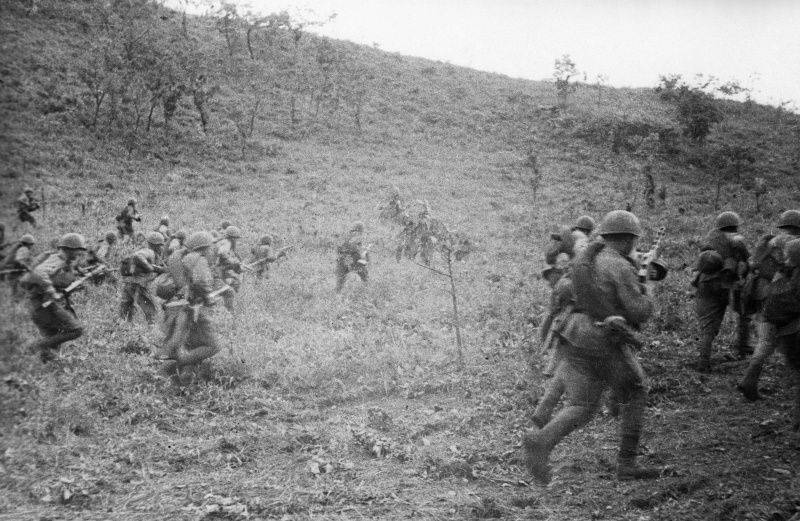
Soldiers of the 5 Army 1 of the Far Eastern Front cross the border with Manchuria
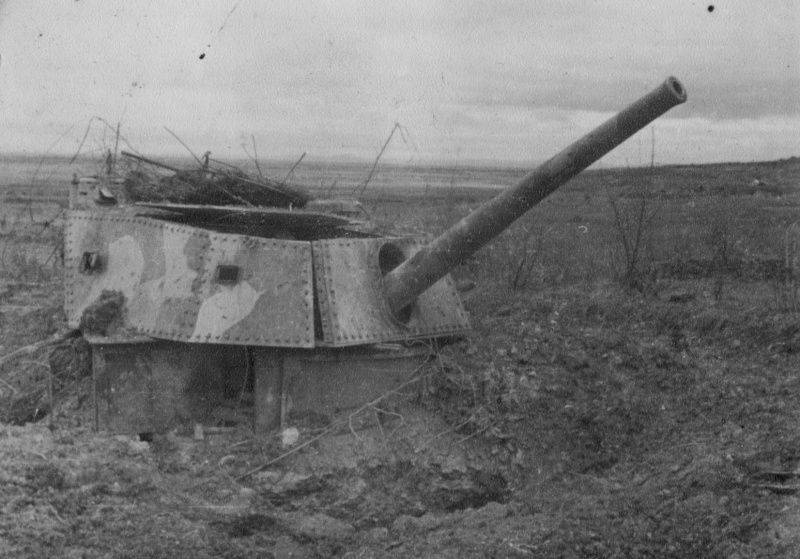
Destroyed by Soviet troops in the Khutous fortified area Japanese 150-mm armor-mounted installation
To cover the approaches to Central Manchuria, the Japanese command focused efforts to keep the line of the Mulin, Mudanjiang and Mudandjiang area. Here the 3 troops of the Japanese army defended as part of five infantry divisions, reinforced by artillery. The approaches to Mudanjiang were well protected, had a significant number of long-term reinforced concrete structures, saturated with machine-gun and artillery weapons.
However, the Japanese could not stop the advance of the 1 th Red Banner and 35 th units, which were actively supported from the air by bombers and ground attack aircraft. Our pilots delivered effective strikes against the enemy’s resistance centers, retreating columns, and reserves suitable for the rear lines of the defense. The 59 th rifle corps of the 1 th KA (Red Banner Army) with the 75 th tank brigade broke through the stubborn resistance of the enemy and took the large communications center, the town of Linkou, cutting off Mudanjiang from the north. The 26 th rifle corps with the 257 th tank brigade, destroying scattered enemy groups, advanced the river Mudanjiang and broke into the city of Mudanjiang. At the same time, the troops of the 5 Army broke through the strongly fortified enemy defenses and took the city of Mulin, developing an offensive against Mudanjiang from the east.
Mudanjiang was of great operational and strategic importance, so the Japanese command continued its efforts to strengthen its defense. The Japanese hoped to keep the city and prevent the breakthrough of Soviet troops in central Manchuria. The Japanese command regrouped the forces, reinforcing the Mudanjiang grouping. Only in the offensive zone of the Soviet army 5 did 10 artillery and 11 mortar batteries function. The defense on the outskirts of the city was strengthened. Fights for Mudanjiang took a tense character. Breaking down the resistance of the Japanese troops, our troops gradually occupied the city. The Japanese have repeatedly switched to counterattacks. The bombers attacked the armored vehicles, hunted down our officers.
The resistance of the Japanese troops was so strong that under the onslaught of the superior forces of the enemy, the advanced parts of the 26 Infantry Corps were forced to leave the city and move away from it by 8-10 km. The Soviet command regrouped its forces, and was forced to organize the assault on Mudanjiang again. On the left flank of the front 25-I army developed an attack on Wangcin. Part of the forces of the army 12 August took the Korean port of Racine.
Thus, for six days of continuous fighting, units of the 1 of the Far Eastern Front broke through the powerful long-term defense of the Kwantung Army on the eastern frontiers, advanced to 100 km deep into Manchuria and began the assault on Mudanjiang. At the same time, the troops of the Soviet front created favorable conditions for an offensive in the southern direction, in Korea, and for isolating the Japanese forces in Manchuria from the Korean grouping.
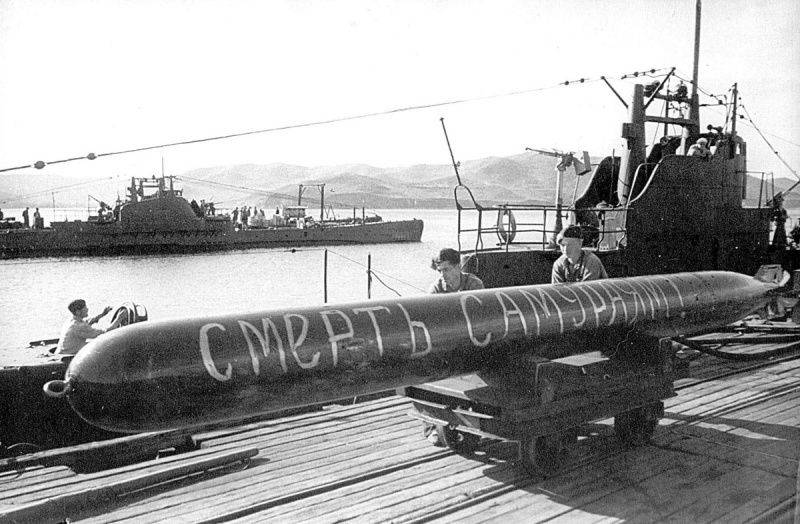
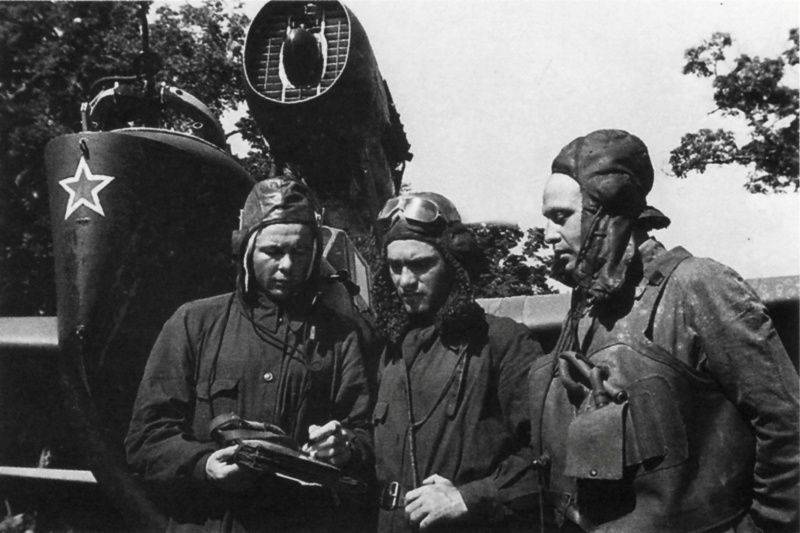
The crew of the MBR-2 aircraft from the Soviet Pacific Air Force fleet getting ready for flight. The first day of the Soviet-Japanese war
The onset of the 2 of the Far Eastern Front
At night, the enemy was attacked by the troops of the 2 of the Far Eastern Front. The offensive was conducted in difficult environmental conditions. Torrential rains in July and August caused flooding. Cupid broke the shores. The places designated for concentration of troops were flooded, the roads washed away. The flooded and marshy banks of the river made it extremely difficult to approach it and choose the location of the crossings. Therefore, areas of concentration of troops and crossing points had to be chosen again. 15 th army reinforced by means of transport: pontoon parks, barges Amur Shipping Company, amphibians. But the main role was played by the Amur flotilla ships. They transported the bulk of the troops and weapons to the landing sites, supported the machine-gun and artillery fire landing of our forces, suppressing the coastal fortifications of the enemy.
Overcoming Japanese resistance, the Soviet 9 advance units of August captured several islands on the Amur River, a bridgehead north of the city of Tongjiang, and defeated the garrison of the city of Fuyuan. At the same time, the 5 th separate rifle corps in the direction of Zhaohey crossed the Ussuri River, took the Dunan stronghold. Parts of the Soviet corps seized two bridgeheads.
The reconnaissance detachments of the 2 th Red Banner Army found that the enemy left only small cover groups and garrisons in separate strongholds on the banks of the Amur River. The main forces of the 4 separate army were withdrawn deep into Manchuria. The front command decided to launch an offensive by the main forces. On the night of August 10, the crossing of the main forces in the Sungari direction began. During the night, ships and transports of the Amur Flotilla transported more than 4 Thousands of soldiers with artillery, vehicles and ammunition. In the morning of August 10, our troops, with the support of attack aircraft, took the city of Tongjiang.
The troops of the 15 Army developed the Jiamusi and Harbin offensive. A fierce battle unfolded for the Fujin fortified area and the city of Fujin (Fugdin). On the southern outskirts of the city there was a well-fortified and defense-ready military town. He had an anti-tank ditch and guns armed with machine guns and bunkers. In the settlement itself, the Japanese created a whole network of fortifications, armed with guns and machine guns, disguised as residential buildings. All of them were connected by trenches and passages of the message. The approaches to the city from the north and east covered several strongholds. The UR was defended by a garrison of three battalions of the 134 Japanese Infantry Division.
On the night of August 12, the main forces of the 361 Infantry Division and the 171 Tank Brigade broke into Fujin. In the morning of August 13, Soviet infantry supported by tanks and naval artillery broke into a military city. The Japanese stubbornly fought back and repeatedly turned into counterattacks, but could not withstand the onslaught of the Soviet troops. The Japanese military city was taken. By the end of August 14, the liquidation of the garrison of the Fujin fortified area was completed. The way to Jiamusi was open.
The troops of the 5 Infantry Corps also advanced successfully. 10 August, after the Japanese garrison of the city of Raohe refused to capitulate, he was defeated and took the town. 14 August, our troops took Baoqing.
The successful offensive of the troops of the 15 Army and the 5 Corps on the Sungari and Zhaohey areas allowed the command of the 2 Far Eastern Front to order the offensive of the 2 Red Army. 9-10 August, forward detachments of the army together with the sailors captured bridgeheads on the banks of the Amur River, south of the cities of Blagoveshchensk, Konstantinovka and Poyarkovo. 11 August 2-I Red Banner Army launched an attack on Qiqihar. As a result, the 2 th Far Eastern Front broke through the enemy defenses and developed an offensive deep into Manchuria.
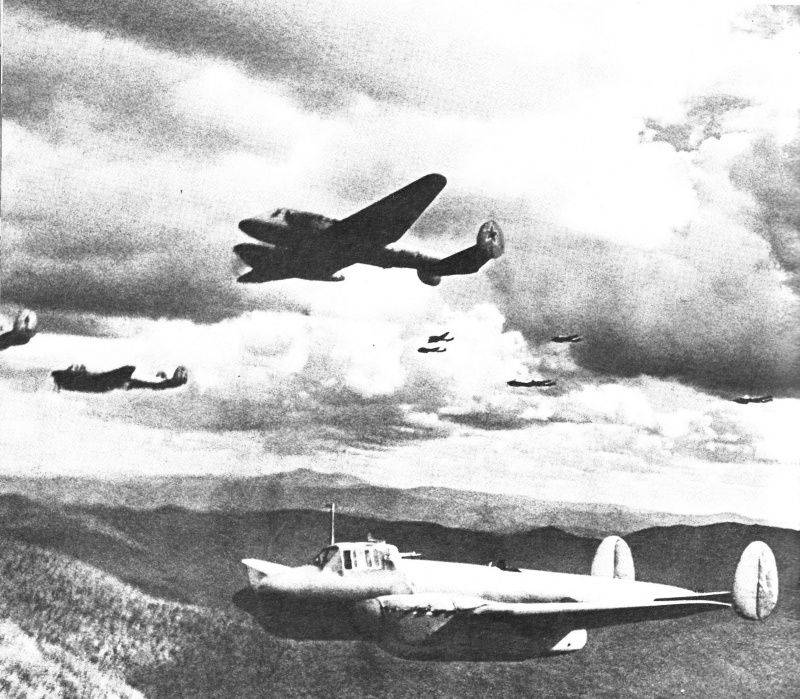
Pe-2 dive bombers of the 1 of the Far Eastern Front are going to perform a combat mission
Sakhalin operation begins
The Soviet command, noting the great success of our troops in Manchuria, decided to go on the offensive on Sakhalin. The strategic situation in Northeast China made it possible to launch offensive operations on Sakhalin and the Kuriles. The task of liberating South Sakhalin was solved by the troops of the 2 of the Far Eastern Front, which launched the 11 August attack on 1945.
On August 11, the 79 Rifle Division of the 16 Army went on the offensive in the direction of Coton-Keaton-Nayoro, and later on to Toyohara. In this direction, the main road passed on South Sakhalin. To the north, the Japanese had the Koton (Kharamitog) fortified area, which was defended by the troops of the 88 Japanese Infantry Division. The Japanese here built a complex network of defenses. 13 August our troops took the city of Coton - the center of the Japanese fortified area. As a result, conditions were created for hacking the enemy's defense system and breaking through to the south.
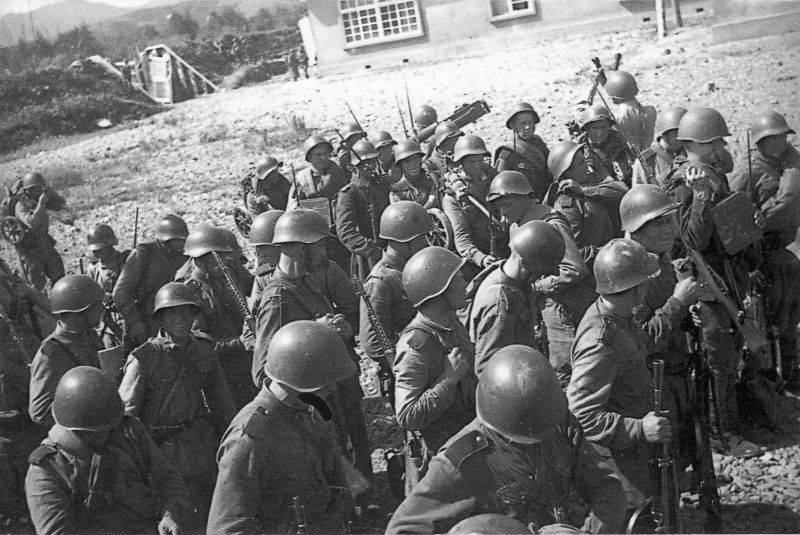
Soviet soldiers on South Sakhalin
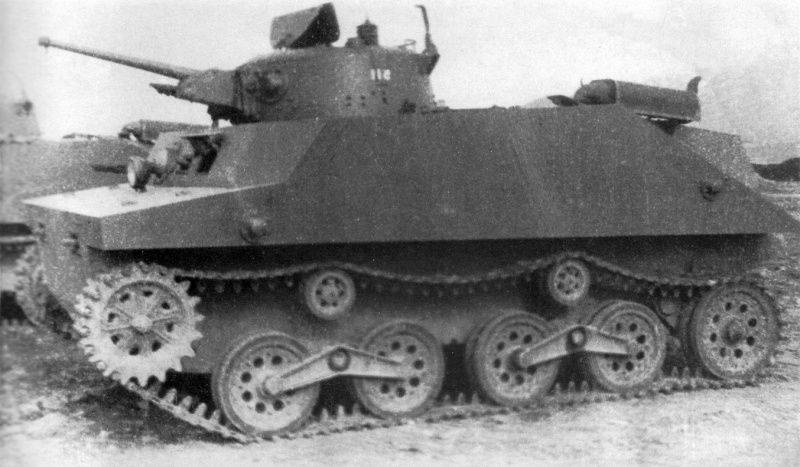
Captured on the island of Shumshu Japanese amphibious tanks Type 2 "Ka-Mi". On the islands of Paramushir and Shumshu were based two battalions of the Japanese marines, which were armed with these tanks
Results of the first stage of the operation
During the first six days of the war with Japan, our troops completely broke through the enemy’s defense system on the border, overcame the line of Japanese fortified areas, approaching the most important vital centers of Manchuria - Harbin, Changchun and Mukden. The Japanese army suffered heavy losses in people and technology. The command of the Kwantung Army could not effectively counteract the Soviet offensive to slow it down and lost command of the troops. Soviet aviation completely dominated the air, striking enemy troops and strongholds, airfields, communications and other important targets.
The locals greeted the Russians as liberators, with great joy, provided all possible assistance. The long rule of the Japanese led to the poverty of the locals. The Japanese treated the Chinese and other nationalities as slaves. The liberated population of Northeast China tried to help in repairing the roads in order to speed up the advance of the Soviet troops, to catch the hiding Japanese.
The defeat of the Kwantung Army put the Japanese military and political leadership in a disaster. The plan to delay the war completely collapsed. 9 August, as soon as Tokyo learned of the USSR’s entry into the war, the emperor ordered an immediate plan for ending the war. 14 August 1945 A joint meeting of the Supreme Military Council and the government in the presence of the emperor decided to surrender the Japanese Empire.
However, the Japanese army continued fighting, although the imperial decree said about the end of the war. The Japanese military continued to resist. The General Staff of the USSR made a special explanation, which stated that the report on the surrender of Japan from August 14 is only a general declaration of unconditional surrender. The order to the armed forces of Japan to cease hostilities is not given and they continue to resist. Consequently, there is no real surrender of Japan yet. Therefore, the Soviet troops in the Far East will continue the attack until the moment when the Japanese forces cease resistance and lay down their arms.
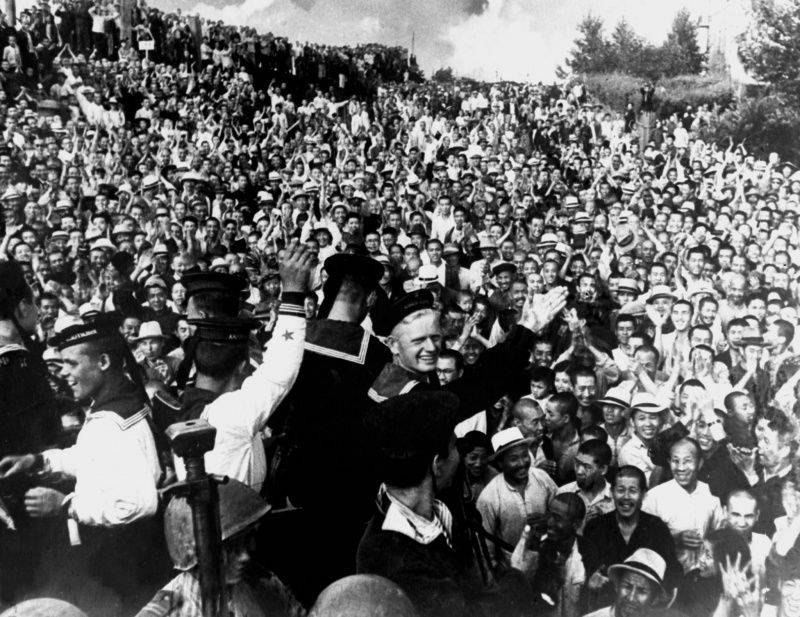
The population of Manchuria meets the Soviet military
To be continued ...
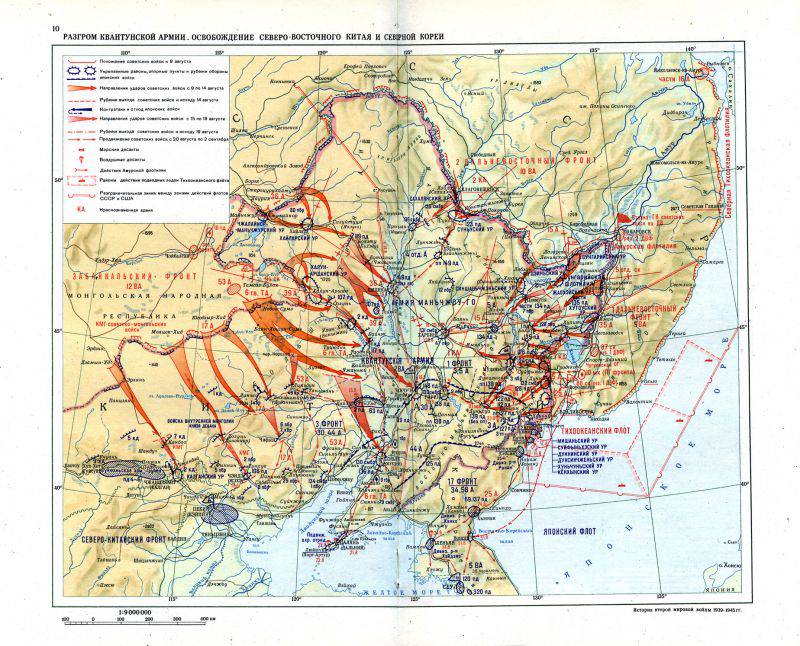
Information